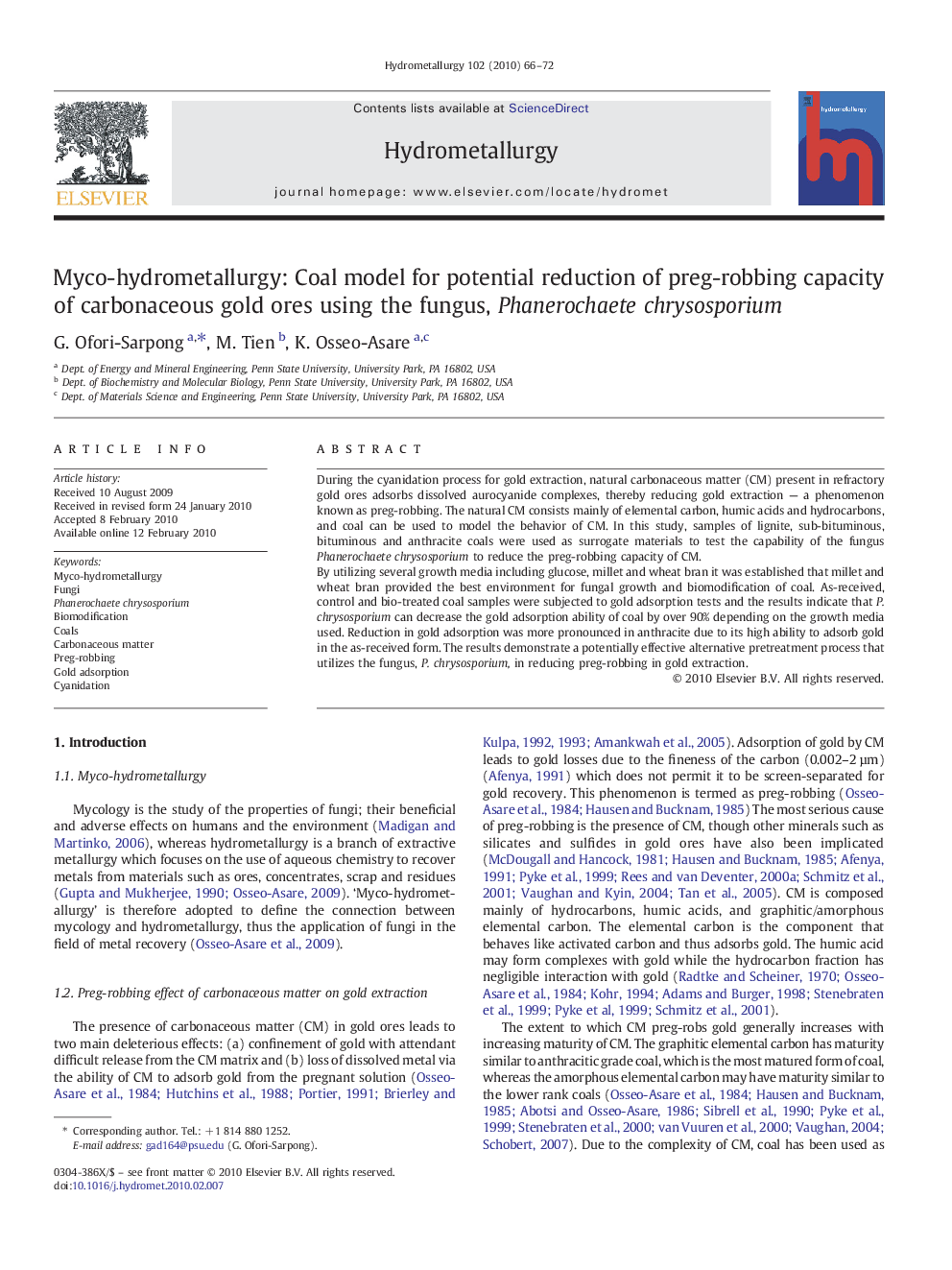| Article ID | Journal | Published Year | Pages | File Type |
|---|---|---|---|---|
| 213127 | Hydrometallurgy | 2010 | 7 Pages |
During the cyanidation process for gold extraction, natural carbonaceous matter (CM) present in refractory gold ores adsorbs dissolved aurocyanide complexes, thereby reducing gold extraction — a phenomenon known as preg-robbing. The natural CM consists mainly of elemental carbon, humic acids and hydrocarbons, and coal can be used to model the behavior of CM. In this study, samples of lignite, sub-bituminous, bituminous and anthracite coals were used as surrogate materials to test the capability of the fungus Phanerochaete chrysosporium to reduce the preg-robbing capacity of CM.By utilizing several growth media including glucose, millet and wheat bran it was established that millet and wheat bran provided the best environment for fungal growth and biomodification of coal. As-received, control and bio-treated coal samples were subjected to gold adsorption tests and the results indicate that P. chrysosporium can decrease the gold adsorption ability of coal by over 90% depending on the growth media used. Reduction in gold adsorption was more pronounced in anthracite due to its high ability to adsorb gold in the as-received form. The results demonstrate a potentially effective alternative pretreatment process that utilizes the fungus, P. chrysosporium, in reducing preg-robbing in gold extraction.
